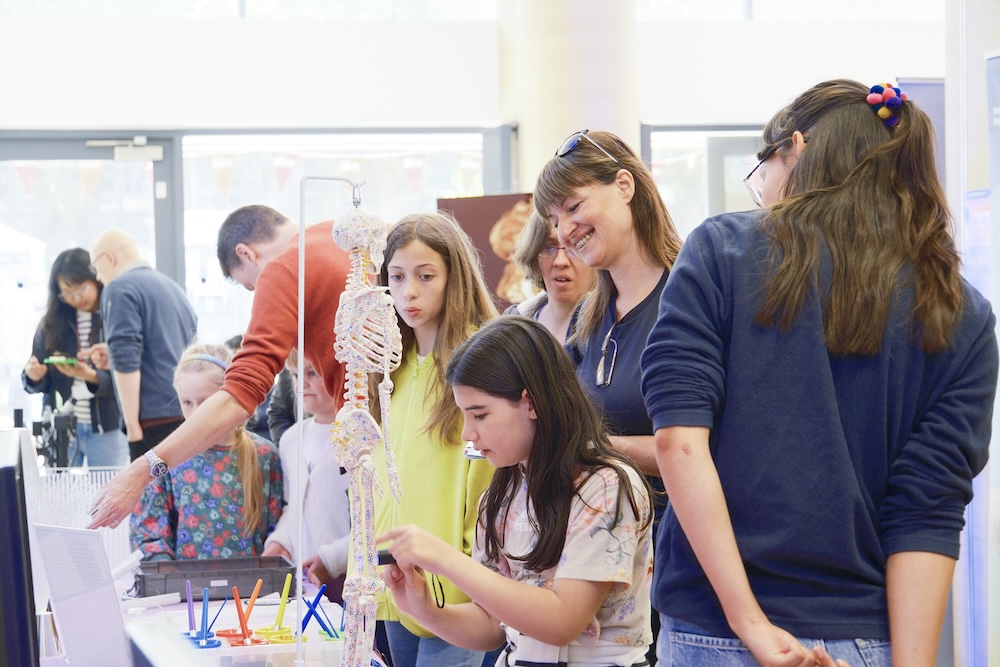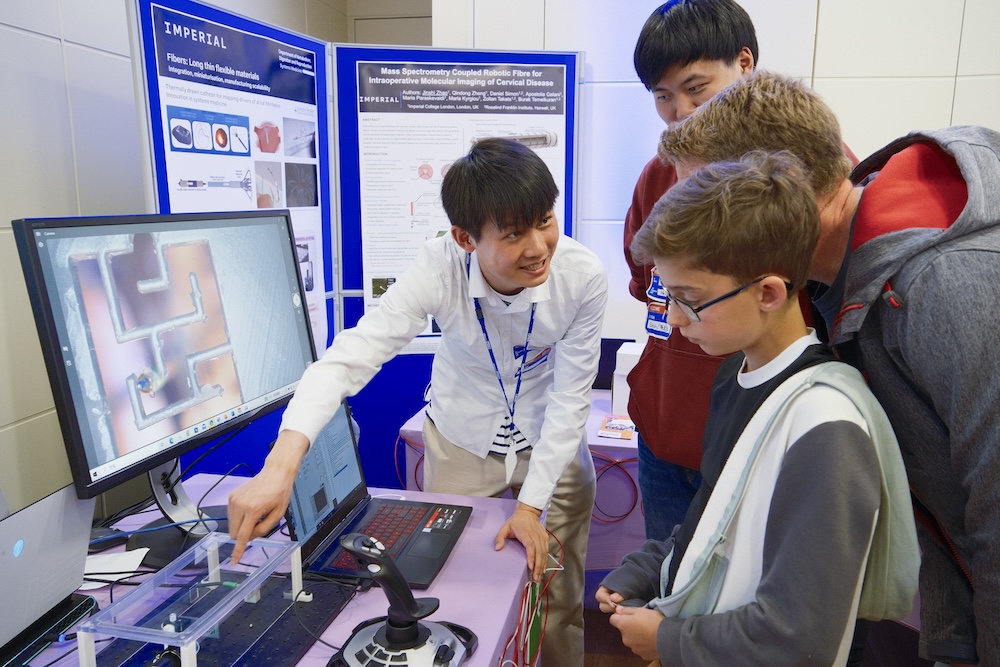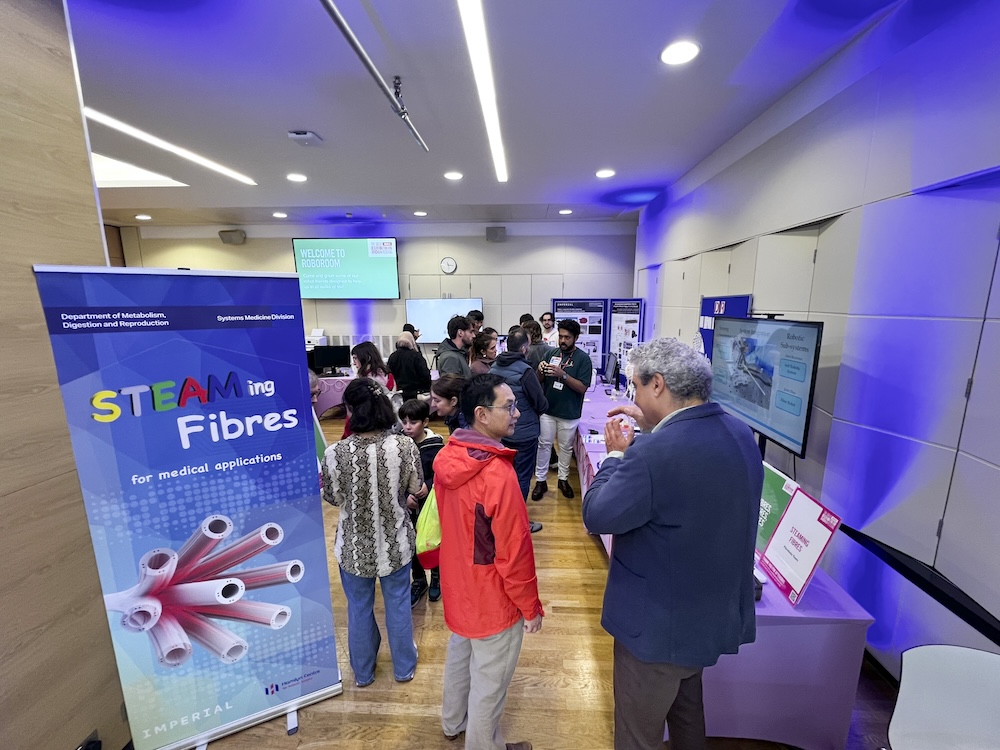
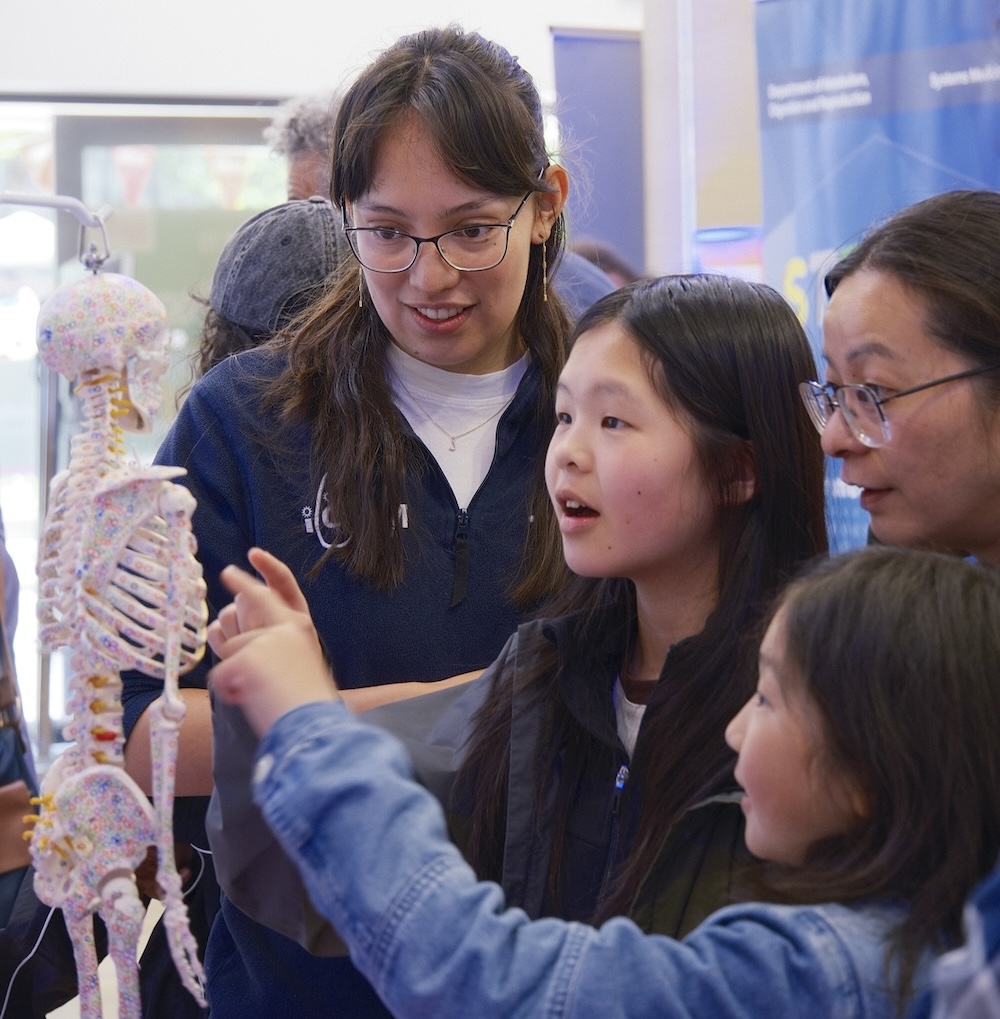 The Division of Systems Medicine had a successful exhibition titled STEAMing Fibres, organised by Dr. Temelkuran and his team at the Great Exhibition Road Festival this year. The exhibit welcomed over 3,000 visitors, offering a variety of engaging activities and demonstrations exploring medical devices made from fibres. Designed specifically with children in mind, these demonstrations aimed to ignite a lifelong interest in the arts and sciences by tapping into their natural curiosity and creativity.
The Division of Systems Medicine had a successful exhibition titled STEAMing Fibres, organised by Dr. Temelkuran and his team at the Great Exhibition Road Festival this year. The exhibit welcomed over 3,000 visitors, offering a variety of engaging activities and demonstrations exploring medical devices made from fibres. Designed specifically with children in mind, these demonstrations aimed to ignite a lifelong interest in the arts and sciences by tapping into their natural curiosity and creativity.
The activities included hands-on exploration of fibres with cross-sections in the shapes of rabbits, stars, and butterflies. Visitors also experienced robotic navigation of a tiny fibre robot through a micro-maze controlled with a joystick under a microscope, virtual drawing using a motion recognition system, and learning about medical devices made from shape memory fibres. Additionally, the team collaborated with two external artists to transform these scientific inventions into art forms, making them accessible and engaging to the public.
Here are some highlights.
- Fibres with cross-sections of rabbit, star and butterfly
- Measuring skin acidity
- Sensing acidity workshop with baking powder, vinegar, and juice – kids love invisible ink
- Detecting disease with fluorescent materials
- Drawing using a manually steered catheter equipped with EM trackers
- Robotic navigation of a tiny fibre robot in a micro-maze controlled with a joystick under a microscope
- Virtual drawing on a screen using a motion recognition system.
- Playing and learning about medical devices made from Shape Memory fibres
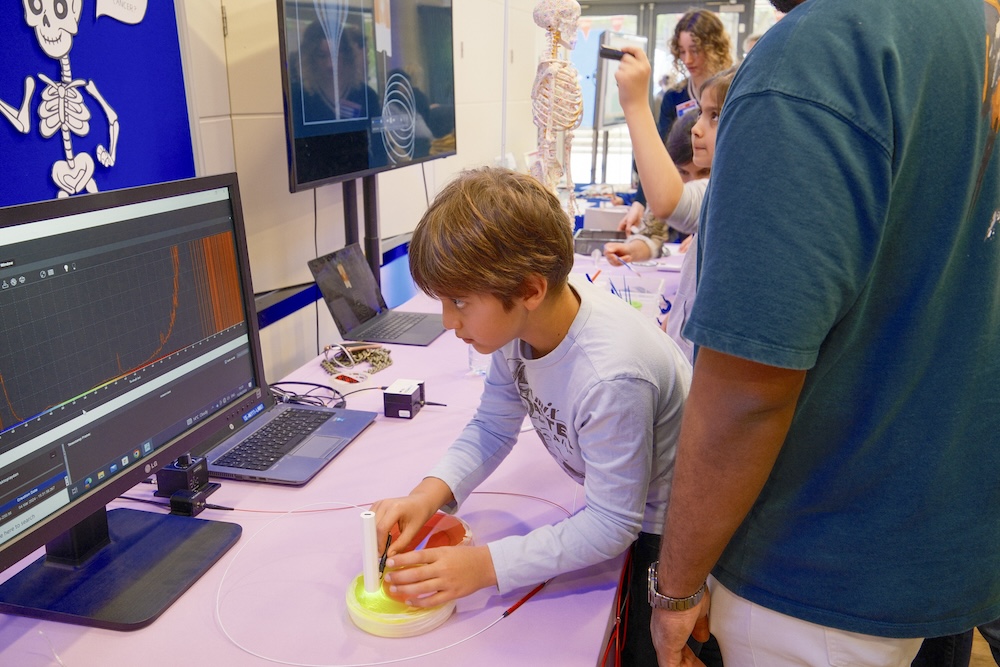 Children were particularly excited to work with invisible ink linked to electrochemical pH sensors and to find fluorescent disease markers on a skeleton using optical sensors. They experienced the challenges of manually manoeuvring catheters and appreciated the ease of joystick-controlled robotics in a micro-maze. Our motion-capturing art display allowed visitors to create art through dance, engaging both children and adults. Furthermore, we had the opportunity to engage in sophisticated conversations with adults about our research on biomarkers, autonomous surgery, and other ongoing projects within the division.
Children were particularly excited to work with invisible ink linked to electrochemical pH sensors and to find fluorescent disease markers on a skeleton using optical sensors. They experienced the challenges of manually manoeuvring catheters and appreciated the ease of joystick-controlled robotics in a micro-maze. Our motion-capturing art display allowed visitors to create art through dance, engaging both children and adults. Furthermore, we had the opportunity to engage in sophisticated conversations with adults about our research on biomarkers, autonomous surgery, and other ongoing projects within the division.
